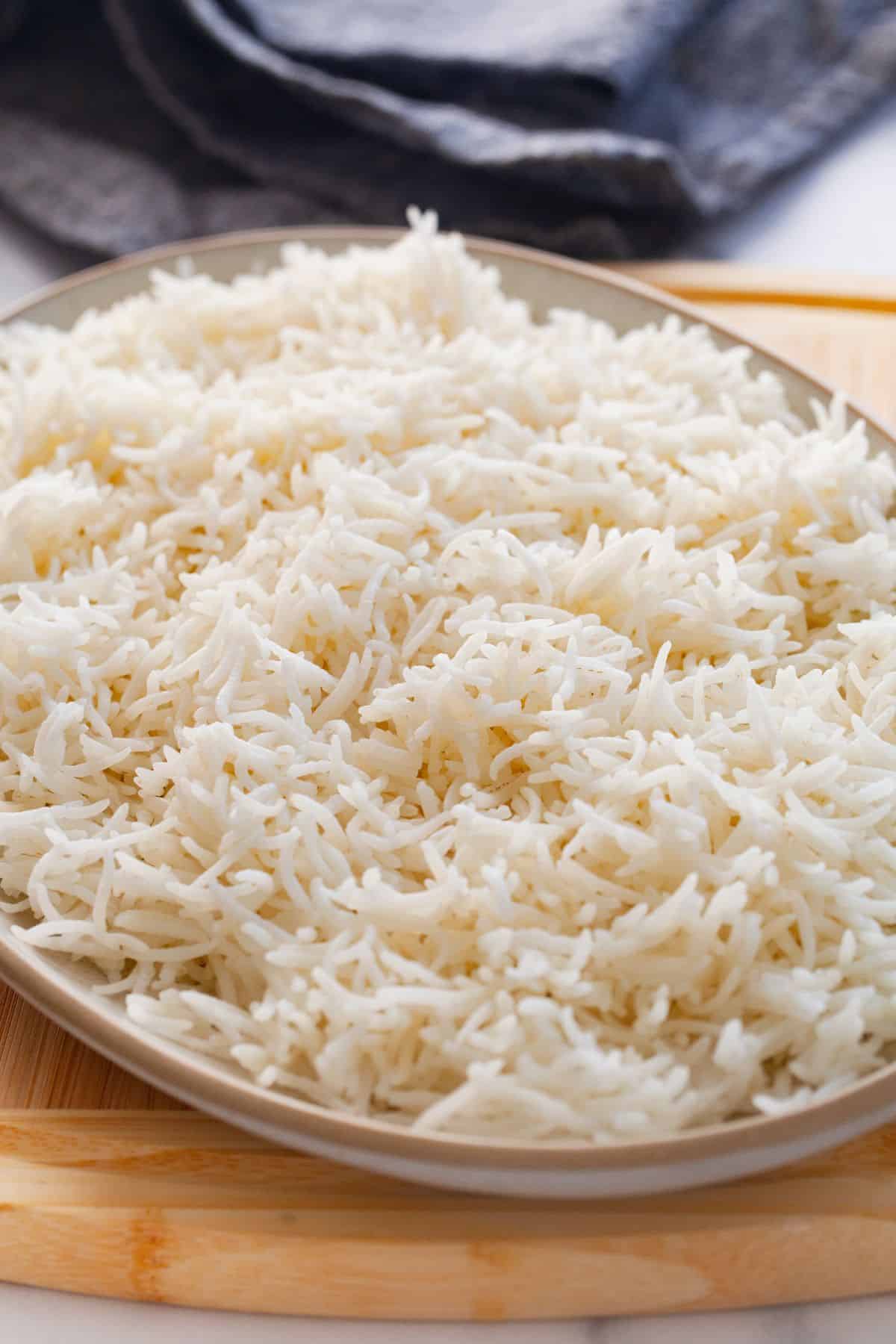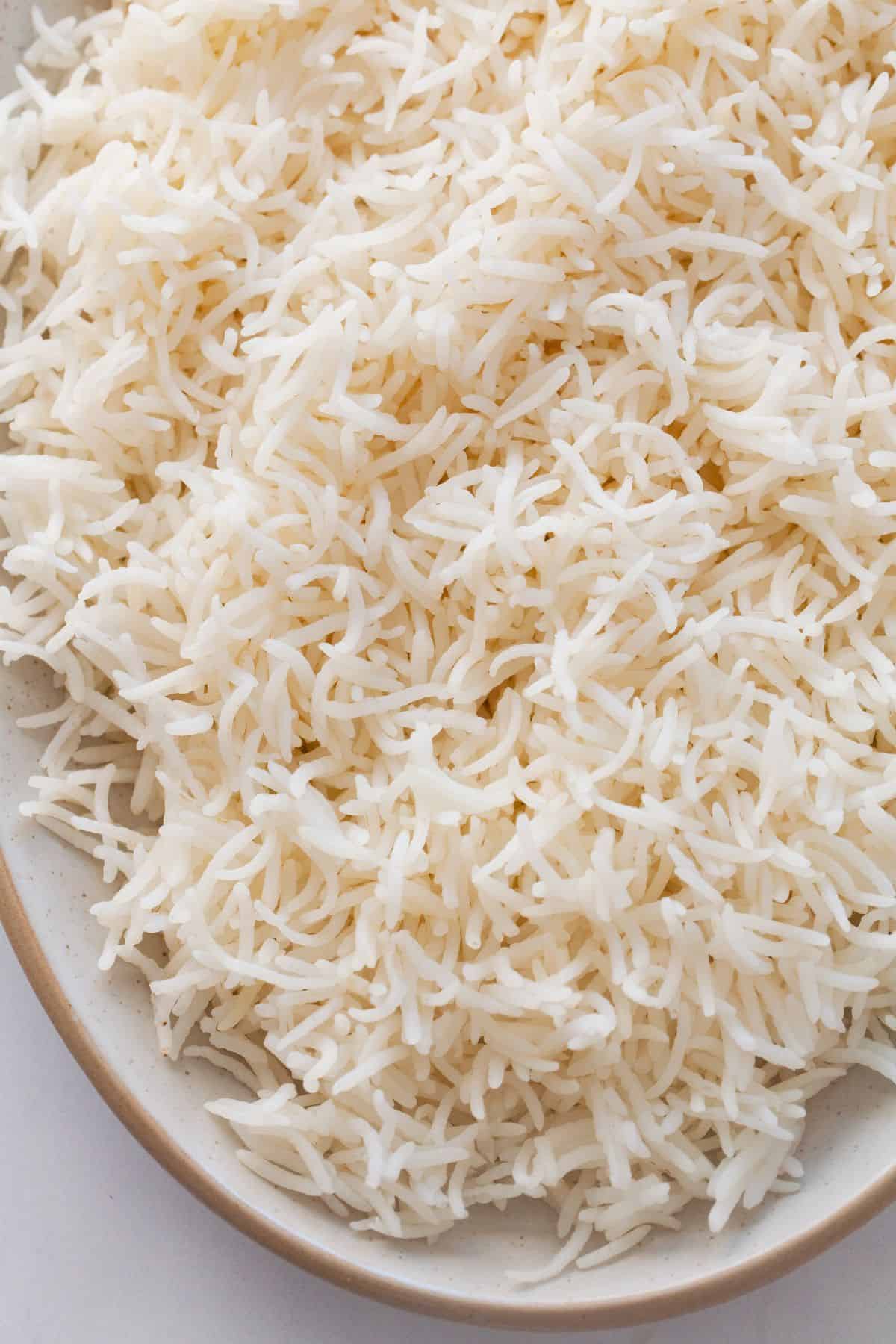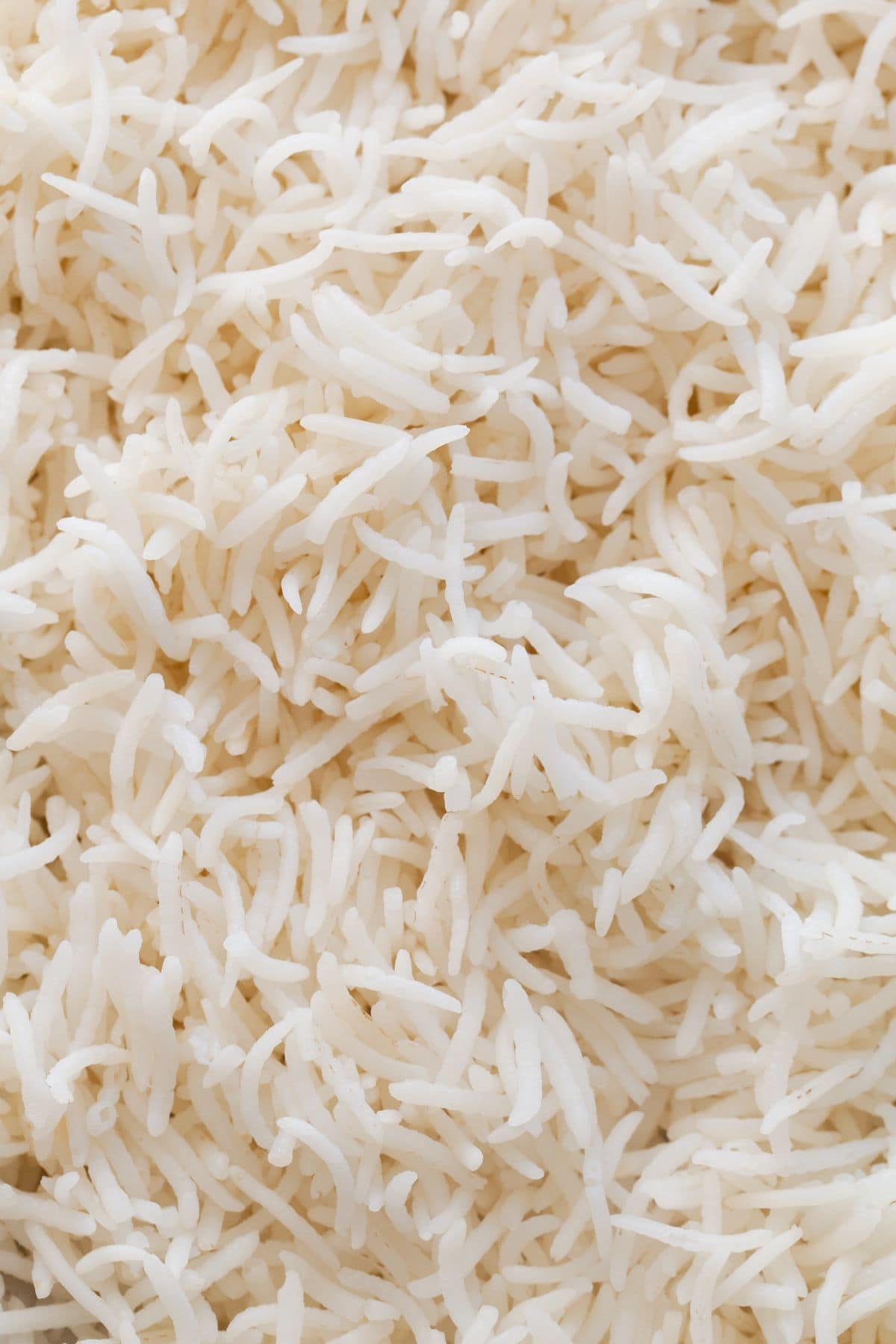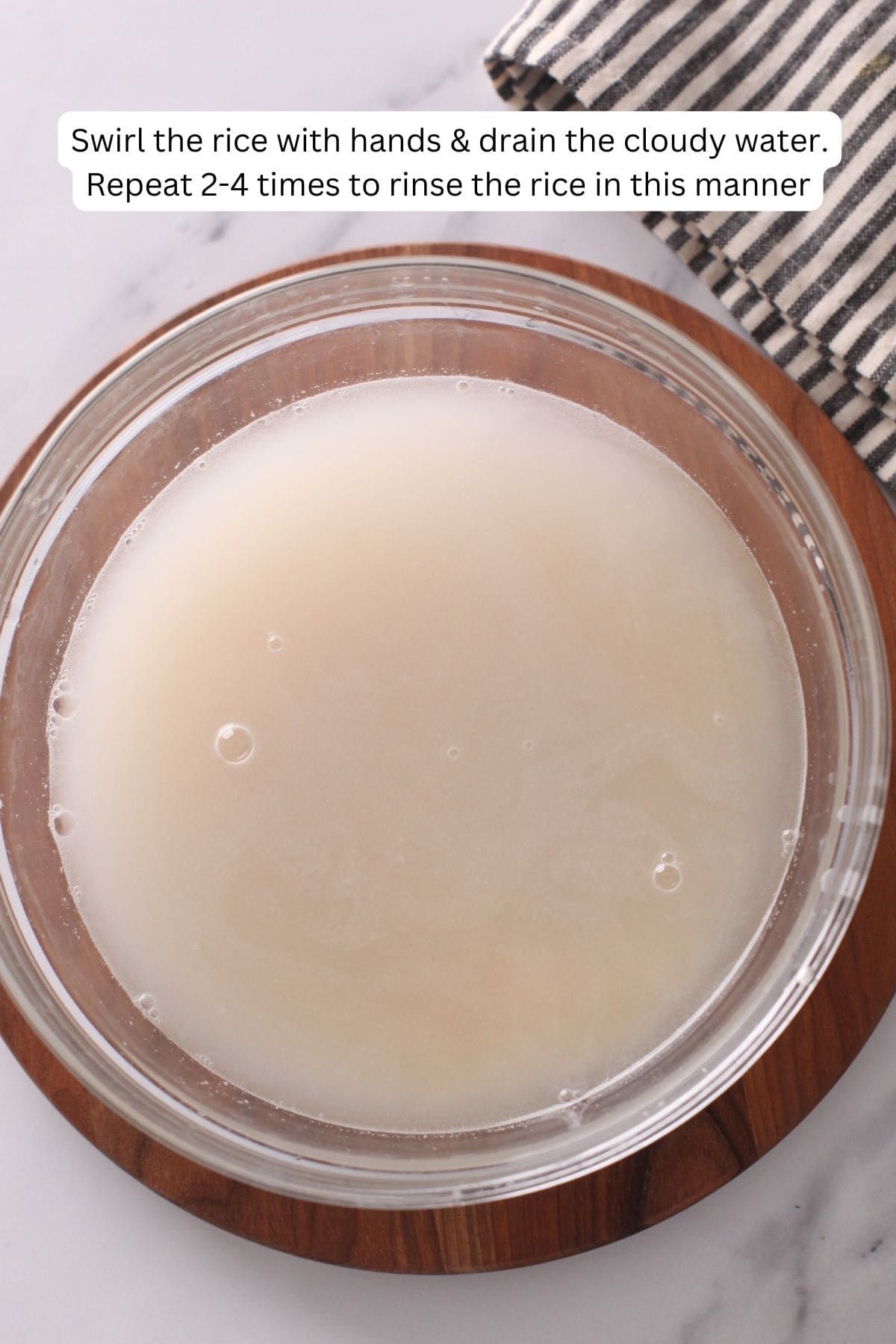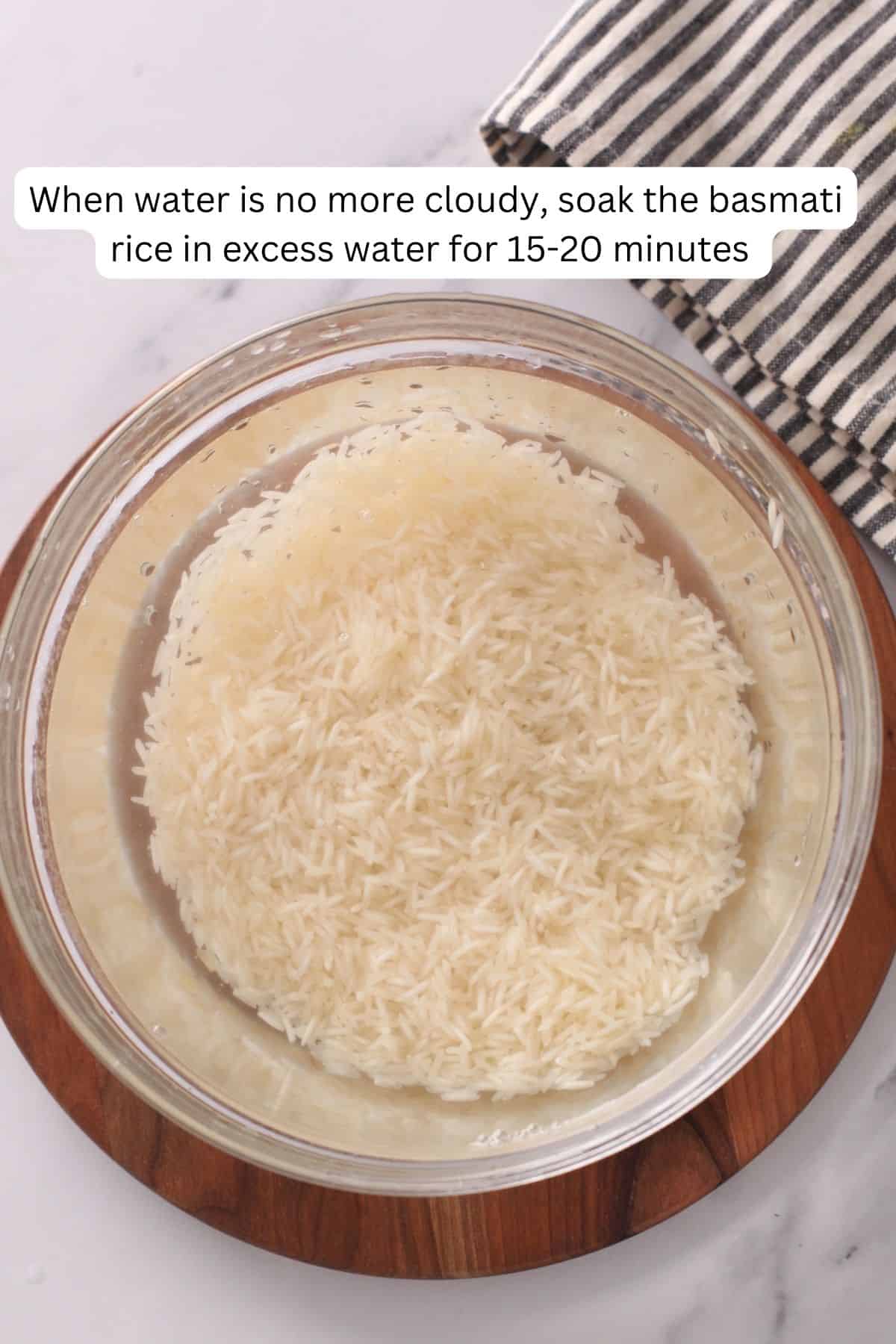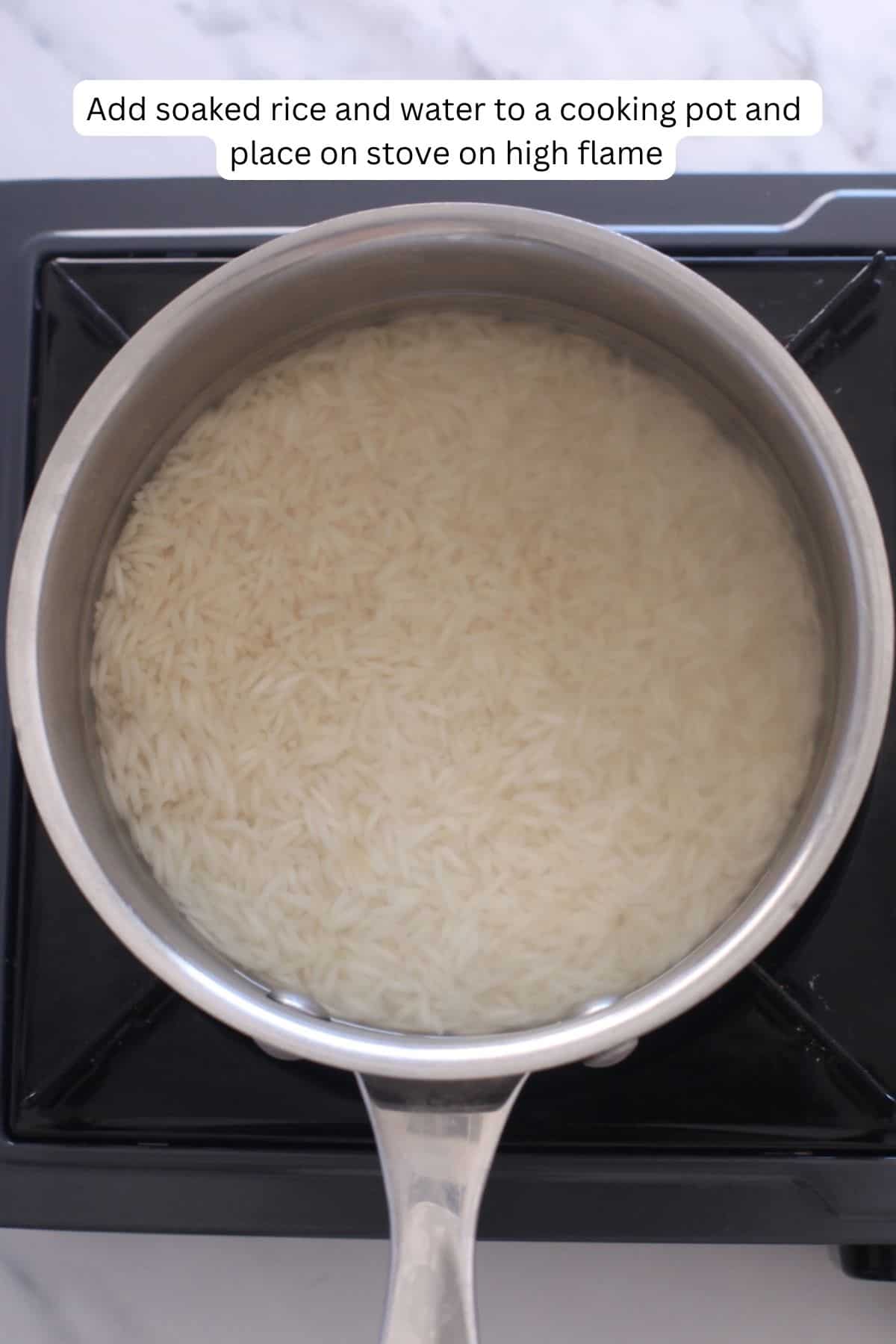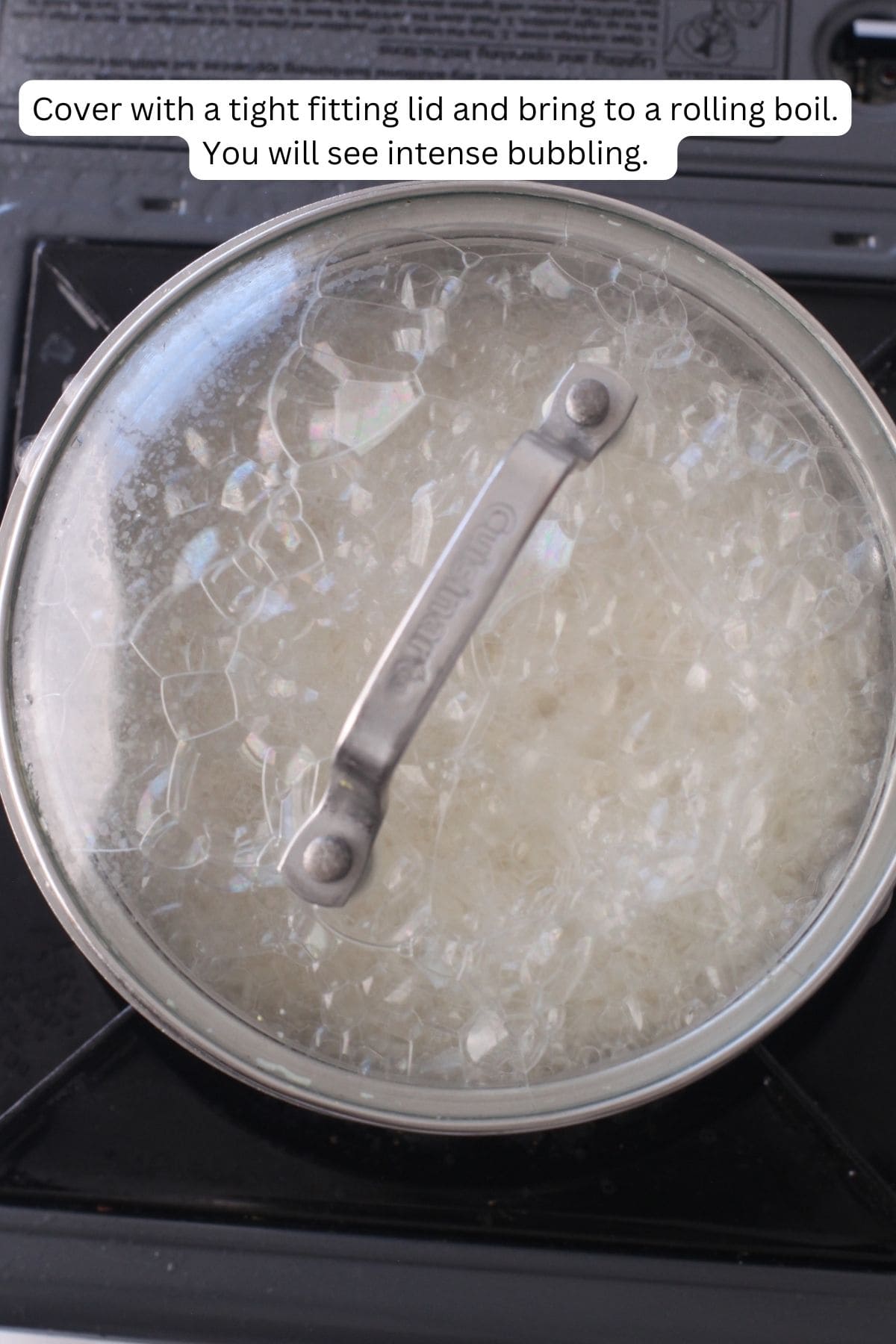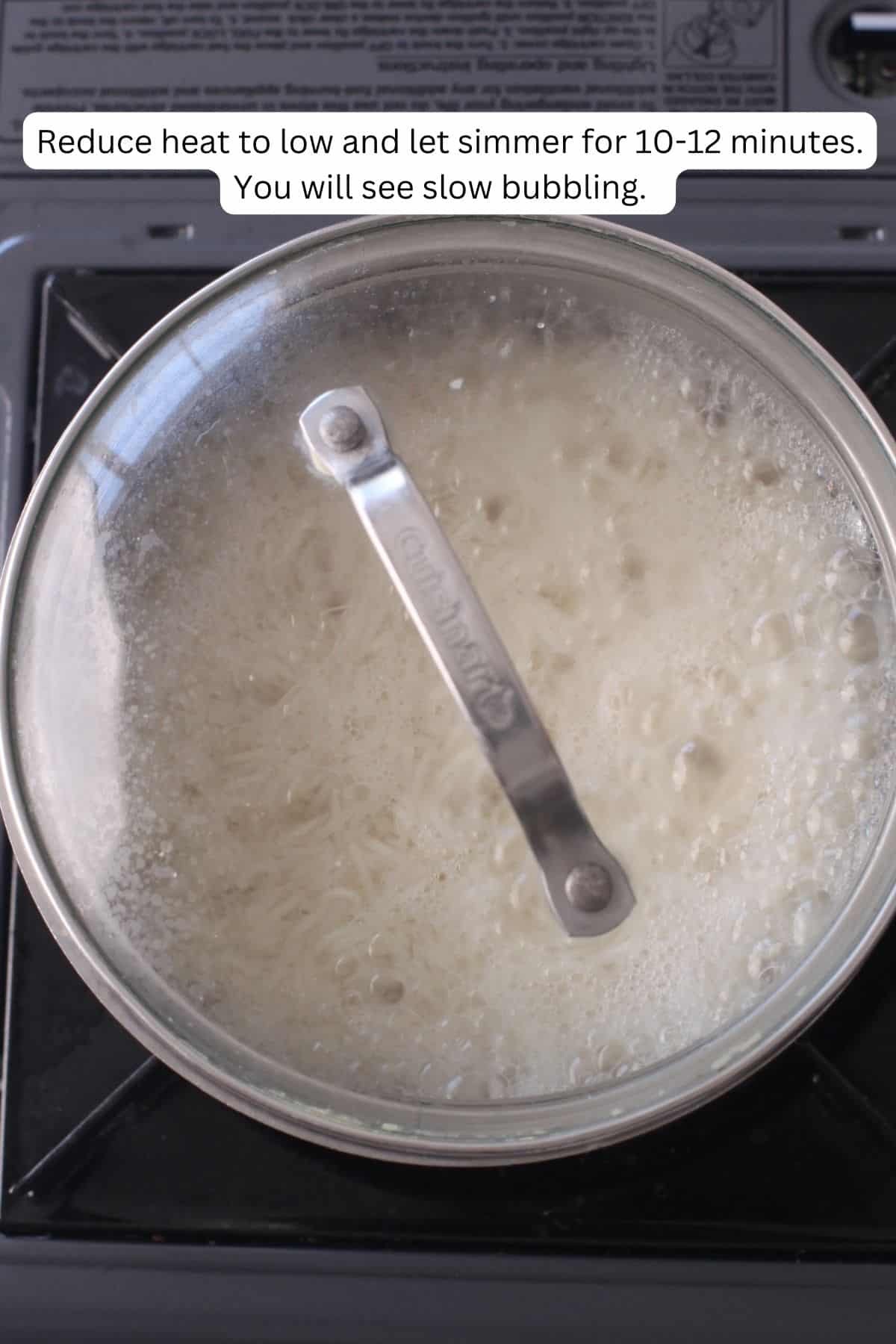I cook plain basmati rice every single day! No to overstress, however it is something that I could cook in my sleep! In indian restaurants, jeera rice or rice dishes (like biryani) are more common, but in our homes, steamed basmati rice is an everyday affair. Though I hail from North India, where flatbreads reign supreme, steamed basmati rice holds an equally cherished place on our table. The simple elegance of white basmati rice makes it the perfect accompaniment to an array of dishes from comforting dal and vibrant vegetarian curries to rich non vegetarian specialties. As a little girl, I was mesmerized by my grandmother’s rice & water measuring ritual. Unlike the fuss of measuring cups, her approach was graceful and efficient. With a single, practiced motion, she’d dip her index finger into the pot containing rice & water, the first knuckle acting as a magical marker. Then she would gently poured more until it reached that precise point. It seemed like alchemy – a simple touch dictating the perfect water ratio. But, in this post, we’ll break down the rice-to-water ratios for various types of basmati rice and discuss the proper tools to use(don’t worry no measuring with knuckles happening here).
What is Basmati Rice
Basmati rice is a long-grained, aromatic rice variety known for its delicate buttery flavor and fluffy texture after cooking. It is primarily cultivated in India and Pakistan in the foothills of the Himalayas. It is different from white rice in taste, aroma and of course, size of grains. My favorite brand of basmati rice is Royal basmati rice. It is easily available in most ethnic grocery stores, in most american supermarkets or on amazon. Whenever your are purchasing a bag of basmati rice, make sure that its labeled as aged and cultivated in India(or indian subcontinent).
Why use Aged Basmati Rice
My grandmother always insisted on using aged rice for fine dishes such as biryani, pulao or zarda (sweet saffron rice) where beauty of rice grains adds to visual appeal of the dish. However, she said that new or ungaed rice is fine for making rice kheer or phirni, where the length of the grain is not as important. Aging basmati rice enhances its flavor, making it deeper and more complex as starches change over time. The moisture content decreases, making the rice light, fluffy, and less likely to clump, resulting in a delightful, non-sticky texture that elevates any dish.
5 Tips for Perfect Basmati Rice
I highly trust the preperation, water ratio and cooking instrictions written behind rice packgaes and I recommned you do stick to the cooking time, especially. Here are few of my tips for perfectly fluffy rice.
Don’t skip rinsing your rice - Basmati rice naturally contains starch, especially white rice with the bran layer removed. When cooked, this starch thickens the water around the rice, potentially making it sticky or mushy. Rinsing removes the excess starch, resulting in enhanced flavor, fluffiness, and better texture. So, take that extra step and rinse your rice. Soak the rice - Soaking rice softens the grains, resulting in two benefits: - faster cooking and a tender, buttery texture without gumminess. Use a heavy bottomed, wide mouthed, shallow pot- For cooking 1 cup or less of rice, a small pot (1.5 to 2 quarts) works fine. For over 1 cup of rice, use a wide, shallow pot. A wide pot gives the grains space to swell & spread without breaking, while a shallow pot ensures the rice layer post cooking isn’t too thick, reducing the chances of breakage when scooping. Don’t peek while the rice cooks - Once you cover the rice pot, don’t open it. The rice will come to a rolling boil, then simmer as the water is absorbed. Lifting the lid disturbs the temperature and can cause uneven cooking. Avoid stirring the rice while it’s boiling since it can break the long basmati grains. Let rest long enough after cooking - After turning off the stove, let the rice sit undisturbed for at least 10-15 minutes before fluffing it. Cooked rice is very soft, and stirring it too soon can break the grains and make it mushy.
How To Cook Fluffy Basmati Rice
Rice To Water Ratio
I tested four brands of rice available in American and ethnic grocery stores for this post. I purchased long-grain basmati rice from the bulk sections of Whole Foods, and a pack each from Walmart & Trader Joe’s. From indian grocery store, I also purchased Royal brand extra long grain basmati rice. Please note that extra long grain basmati rice is different from sela basmati rice. Below is the estimated rice-to-water ratio I determined after cooking each type of rice. Many people prefer firm rice and some prefer a softer, buttery texture. It all boils down to water quantity that you add while cooking. Please keep in mind that I soaked the rice for 20 minutes before cooking in all cases.
Commom Problems
Storing & Freezing
Store cooked basmati rice in an air tight container for 1-3 days. Spread just cooked rice on a cookie sheet and let cool down fully (takes about 25-30 minutes for 3 cups of cooked rice). For food safety purposes, immediately transfer to an air tight container and place in the refrigerator to avoid possibility of mold formation. To freeze, transfer the cooled basmati rice into quart size ziplock bags. I usually freeze 1 cup cooked rice per bag. Close the ziplock bags and then flatten gently. Stack in the freezer. To reheat, take out the entire block of rice(don’t break it) and place on a microwave safe bowl or plate. Cover the plate with a microwave safe lid. Microwave for 2-3 minutes(depends on power of your microwave) to reheat. If it feels a bit dry, splash some water and reheat for another minute.
Serving Suggestions
Dal Chawal - Ladle dal (lentils) over steamed basmati rice and add a dollop of ghee on top - classic indian comfort food. Vegetarian Curries - Such a baingan aloo or indan pumpkin curry. Non Vegetarian Curries - Such a goat curry, lamb curry or coconut chicken curry.
